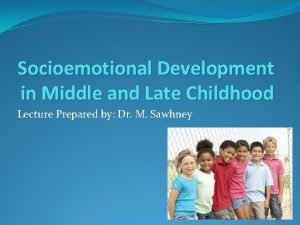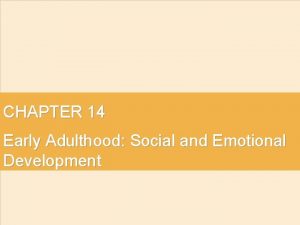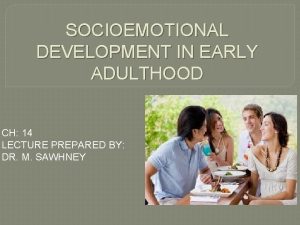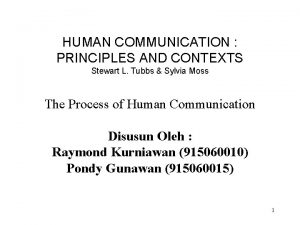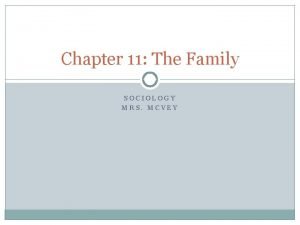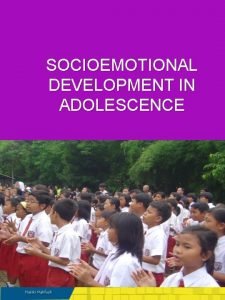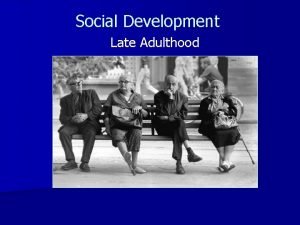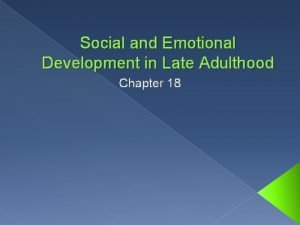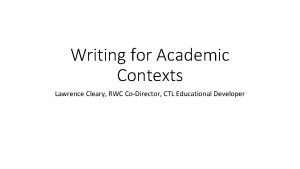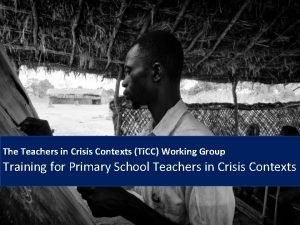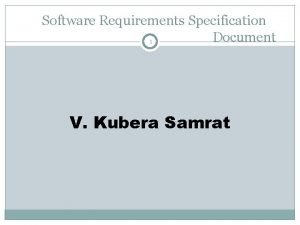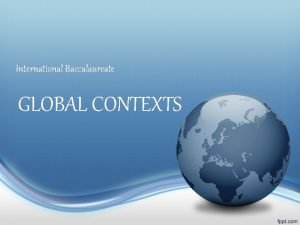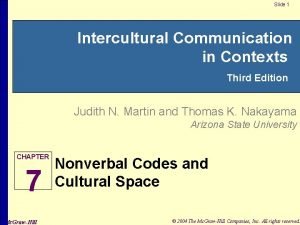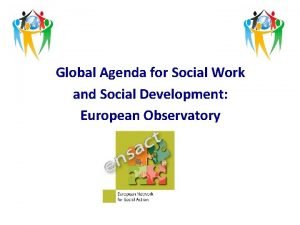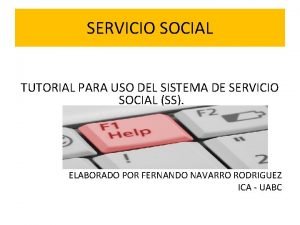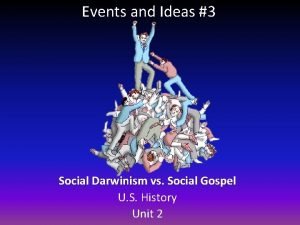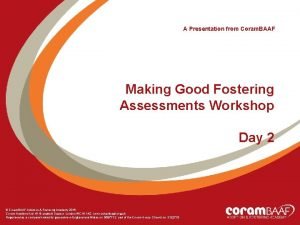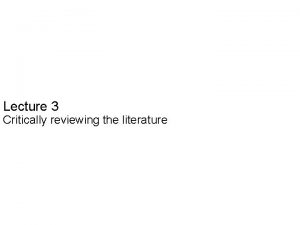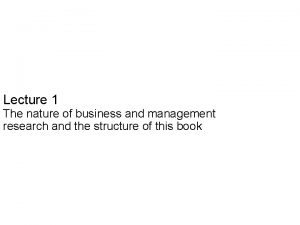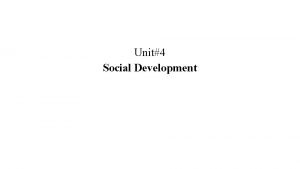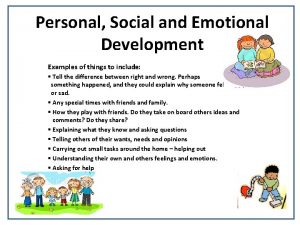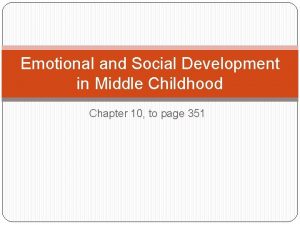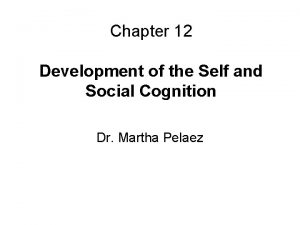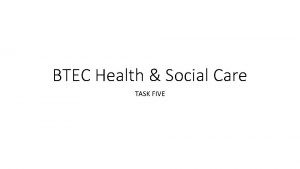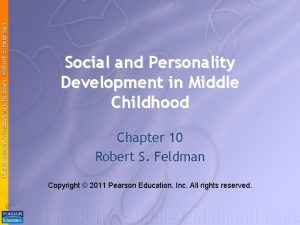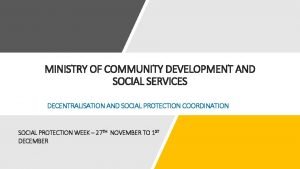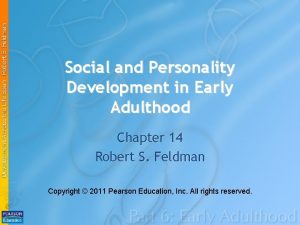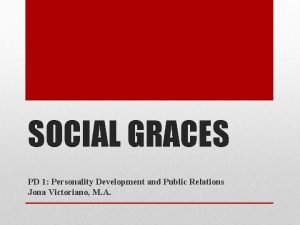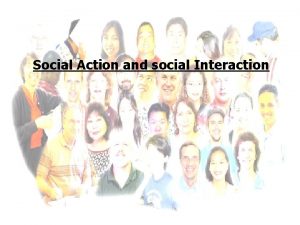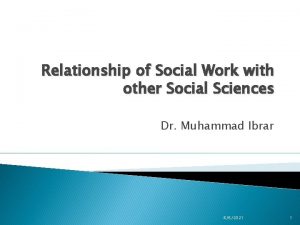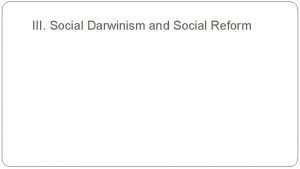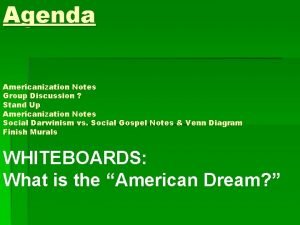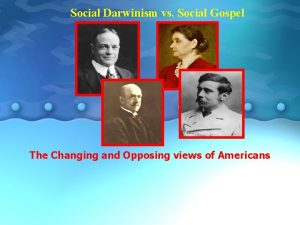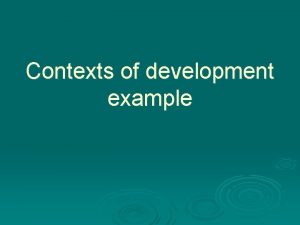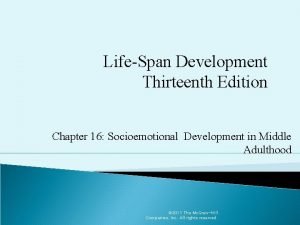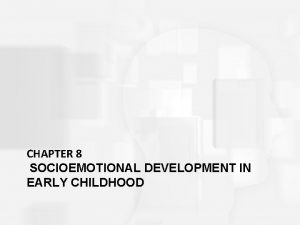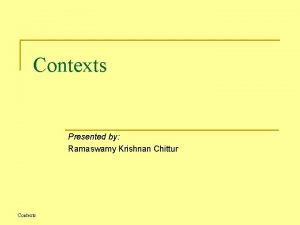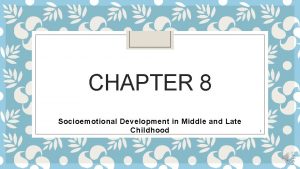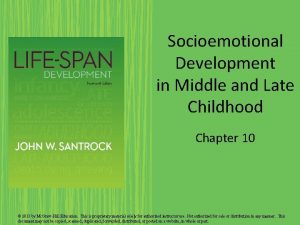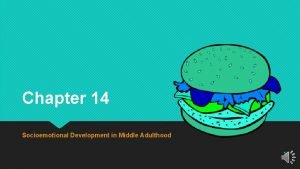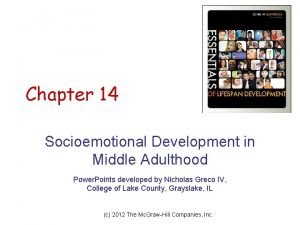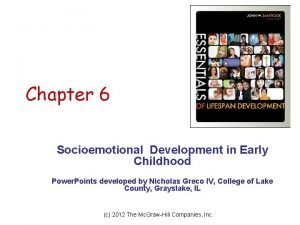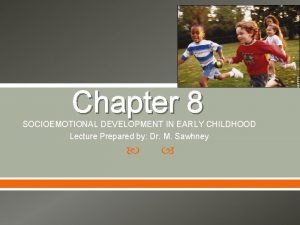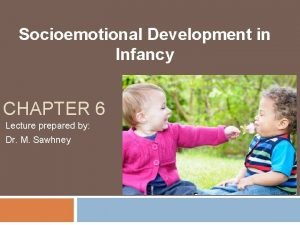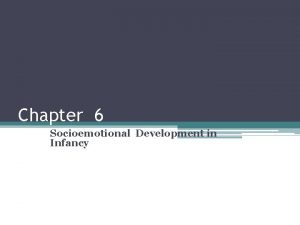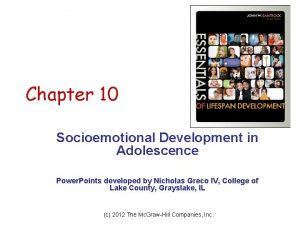CHAPTER 3 Social Contexts and Socioemotional Development 2009












































- Slides: 44

CHAPTER 3 Social Contexts and Socioemotional Development © 2009 Mc. Graw-Hill Higher Education. All rights reserved.

Learning Goals 1. Describe two contemporary perspectives on socioemotional development: Bronfenbrenner’s ecological theory and Erikson’s life-span development theory. 2. Discuss how the social contexts of families, peers, and schools are linked with socioemotional development. 3. Explain these aspects of children’s socioemotional development: self-esteem, identity, moral development, and coping with stress. © 2009 Mc. Graw-Hill Higher Education. All rights reserved.

Social Contexts and Socioemotional Development Contemporary Theories Bronfenbrenner’s Ecological Theory Erikson’s Life-Span Development Theory © 2009 Mc. Graw-Hill Higher Education. All rights reserved.

Bronfenbrenner’s Ecological Theory Bronfenbrenner’s theory focuses on the social contexts in which people live and the people who influence their development. © 2009 Mc. Graw-Hill Higher Education. All rights reserved.

Bronfenbrenner’s Ecological Theory cont’d Microsystem: Direct interactions with parents, teachers, peers, and others. Mesosystem: Linkages between microsystems such as family and school, and relationships between students and peers. Exosystem: Experiences in settings in which a child does not have an active role influence the child’s experiences. © 2009 Mc. Graw-Hill Higher Education. All rights reserved.

Bronfenbrenner’s Ecological Theory cont’d Macrosystem: The broader culture in which students and teachers live. Chronosystem: The sociohistorical conditions of a student’s development. © 2009 Mc. Graw-Hill Higher Education. All rights reserved.

Bronfenbrenner’s Ecological Theory into Practice Sid’s father left his family years ago and provides no support for them. Sid and his three siblings live with their mother in a public housing project for low-income families. They receive public assistance in the form of reduced rent, money to live on, and participation in a food program. Sid and his siblings receive free school lunches, and do not have to pay the standard book rental fee. In addition, they receive free medical care when ill or injured, but Sid’s mother considers the care they receive to be substandard. Recently, she contacted legal aid about obtaining child support from her children’s father Q. 1: What aspects of Sid’s microsystem are discussed in the example? Explain. Q. 2: What aspects of Sid’s exosystem are discussed in the example? Explain. © 2009 Mc. Graw-Hill Higher Education. All rights reserved.

Bronfenbrenner’s Ecological Theory into Practice Sid’s father left them years ago and provides no support for the family. Sid and his three siblings live with their mother in a public housing project for low-income families. They receive public assistance in the form of reduced rent, money to live on, and participate in a food program. Sid and his siblings receive free school lunches, and do not have to pay the standard book rental fee. In addition, they receive free medical care when ill or injured, but Sid’s mother considers the care they receive to be substandard. Recently, she contacted legal aid about obtaining child support from her children’s father. Q. 3: How is the mesosystem currently operating for Sid? Explain. © 2009 Mc. Graw-Hill Higher Education. All rights reserved.

Bronfenbrenner’s Theory in the Classroom n n n Think about children embedded in several environmental systems and influences Attend to connections between school and families Recognize the importance of community, culture, and socioeconomic status © 2009 Mc. Graw-Hill Higher Education. All rights reserved.

Erikson’s Life-Span Development Theory n n n Development proceeds in stages Each stage is characterized by a psychosocial challenge or crisis Stages reflect the motivation of the individual © 2009 Mc. Graw-Hill Higher Education. All rights reserved.

Erikson’s Eight Stages of Human Development 8 - Integrity vs. despair 7 - Generativity vs. stagnation 6 - Intimacy vs. isolation 5 - Identity vs. identity confusion 4 - Industry vs. inferiority 3 - Initiative vs. guilt 2 - Autonomy vs. shame and doubt 1 - Trust vs. mistrust © 2009 Mc. Graw-Hill Higher Education. All rights reserved.

Erikson’s Human Development Stages 1 - Trust vs. Mistrust 0– 1 years 2 - Autonomy vs. Shame and Doubt 1– 3 years 3 - Initiative vs. Guilt 3– 5 years Developed through consistent love and support Independence fostered by support and encouragement Developed by exploring and accepting challenges © 2009 Mc. Graw-Hill Higher Education. All rights reserved.

Erikson’s Human Development Stages 4 - Industry vs. Inferiority 6 years–puberty Mastery comes from success and recognition 5 - Identity vs. Role Confusion Adolescence Exploration of different paths to attain a healthy identity 6 - Intimacy vs. Isolation Early adult years Form positive, close relationships with others © 2009 Mc. Graw-Hill Higher Education. All rights reserved.

Erikson’s Human Development Stages 7 - Generativity vs. Stagnation Middle Adulthood Transmitting something positive to the next generation 8 - Integrity vs. Despair Late Adulthood Life review and retrospective evaluation of one’s past © 2009 Mc. Graw-Hill Higher Education. All rights reserved.

Strategies for Erikson’s Stages of Development Initiative ü Encourage social play ü Have children assume responsibility ü Structure assignments for success Industry ü Nourish motivation for mastery ü Be tolerant of honest mistakes Identity ü Recognize that identity is multidimensional ü Encourage independent thinking ü Stimulate students to examine different perspectives © 2009 Mc. Graw-Hill Higher Education. All rights reserved.

Social Contexts and Socioemotional Development Social Contexts of Development Families Peers Schools © 2009 Mc. Graw-Hill Higher Education. All rights reserved.

Baumrind’s Parenting Styles Neglectful Authoritarian Parents are uninvolved. Children have poor selfcontrol, don’t handle independence well, and low achievement motivation. Parents are restrictive and punitive. Children tend to be socially incompetent, anxious, and exhibit poor communication skills. Indulgent Authoritative Parents are highly involved but set few restrictions. Children have poor self-control. Parents are nurturing and supportive, yet set limits. Children are self-reliant, get along with peers, and have high self-esteem. © 2009 Mc. Graw-Hill Higher Education. All rights reserved.

The Changing Family Working parents n Nature of parents’ work matters Children in divorced families n n The quality of parental relationships, timing of divorce, use of support systems, type of custody, SES, and quality schooling all affect children. Elementary school children did best when the parent and the school environment were authoritative. Children in stepfamilies n Show more adjustment problems than children in intact families, especially during adolescence © 2009 Mc. Graw-Hill Higher Education. All rights reserved.

Ethnic and Socioeconomic Variations in Families Minority students n n n Families tend to be larger; depend more on the extended family for support Single parents are more common Less educated; lower income Low-income parents n n Tend to value external characteristics such as obedience and neatness See education as the teachers’ job © 2009 Mc. Graw-Hill Higher Education. All rights reserved.

Ethnic and Socioeconomic Variations in Families Middle-class families n n Often place high value on internal characteristics such as self-control and delayed gratification See education as a mutual responsibility © 2009 Mc. Graw-Hill Higher Education. All rights reserved.

School-Family Linkages Provide assistance to families Include families as participants in school decisions Communicate effectively with families about school programs and their child’s progress Encourage parents to be volunteers Involve families with their children in learning activities at home Coordinate community collaboration © 2009 Mc. Graw-Hill Higher Education. All rights reserved.

Peer Statuses Popular Frequently nominated as best friend; rarely disliked by peers Rejected Neglected Seldom “best friend”; often actively disliked by peers Infrequently “best friend”; not disliked by peers © 2009 Mc. Graw-Hill Higher Education. All rights reserved.

Peer Statuses Average Controversial Receive both positive and negative peer nominations Frequently “best friend”; often disliked by peers © 2009 Mc. Graw-Hill Higher Education. All rights reserved.

Friendships Reflect: What is a friend? Quality of Friendships Affect Outcomes © 2009 Mc. Graw-Hill Higher Education. All rights reserved.

Early Childhood and Elementary School n Developmentally appropriate practices n Early Childhood Approaches Reggio Emilia Montessori Academic versus child-centered n Transition to elementary schools © 2009 Mc. Graw-Hill Higher Education. All rights reserved.

Schools for Adolescents n Transition to Middle or Junior HS Stressful due to developmental changes Top-dog phenomenon Academic challenge n Carnegie Corporation 1989 Recommendations n Improving America’s High Schools High expectations for all students Improve drop-out rates © 2009 Mc. Graw-Hill Higher Education. All rights reserved.

Social Contexts and Socioemotional Development The Self Moral Development Coping with Stress © 2009 Mc. Graw-Hill Higher Education. All rights reserved.

Self-Concept and Self-Esteem Self-concept is a cognitive appraisal of our social, physical, and academic competence. Academic Social Cognitive Physical Self-esteem is the affective or emotional reaction to one’s self-concept. © 2009 Mc. Graw-Hill Higher Education. All rights reserved.

Improving Children’s Self-Esteem q Identify causes of low self-esteem and areas of competence important to the self q Provide emotional support and social approval q Help children achieve q Develop coping skills © 2009 Mc. Graw-Hill Higher Education. All rights reserved.

Marcia’s Four Statuses of Identity © 2009 Mc. Graw-Hill Higher Education. All rights reserved.

Ethnic Identity … “is an enduring aspect of the self that includes a sense of membership in an ethnic group, along with the attitudes and feeling related to that membership” (Phinney, 2006) (as cited in Santrock, 2009). Positive ethnic identity Higher school engagement Lower aggression Navajo adolescents: higher self-esteem, school connectedness, and social functioning © 2009 Mc. Graw-Hill Higher Education. All rights reserved.

Kohlberg’s Levels of Moral Development n Preconventional Moral reasoning is controlled by external rewards and punishments. n Conventional Internal standards are imposed by others. n Postconventional Morality is internal, not based on external standards. © 2009 Mc. Graw-Hill Higher Education. All rights reserved.

Kohlberg’s Theory of Moral Development Theory into Practice Sam starts to get out of his seat to sharpen his pencil without permission. He stops because he realizes that if he does, others might also do so and this could result in disorder in the classroom. Because of this, he understands that it is his duty to follow the rules. Q: At which of Kohlberg’s stages of moral development is Sam functioning? © 2009 Mc. Graw-Hill Higher Education. All rights reserved.

Kohlberg’s Theory of Moral Development Theory into Practice Sam starts to get out of his seat to sharpen his pencil without permission. He stops because he realizes that if he does, he will be punished. Q: At which of Kohlberg’s stages of moral development is Sam functioning? Explain. © 2009 Mc. Graw-Hill Higher Education. All rights reserved.

Kohlberg’s Theory of Moral Development Theory into Practice Sam starts to get out of his seat to sharpen his pencil without permission. He stops because he realizes that if he does, it will displease his teacher. Q: At which of Kohlberg’s stages of moral development is Sam functioning? Explain. © 2009 Mc. Graw-Hill Higher Education. All rights reserved.

Care vs. Justice Perspective Justice perspective focuses on rights of individuals Care perspective emphasizes relationships and concern for others © 2009 Mc. Graw-Hill Higher Education. All rights reserved.

Reflection & Observation Reflection: n Recall a cheating incident. What factors influenced the decision to cheat? © 2009 Mc. Graw-Hill Higher Education. All rights reserved.

Enter the Debate Should teachers teach students values/morality? YES NO © 2009 Mc. Graw-Hill Higher Education. All rights reserved.

Moral Education 1. Hidden Curriculum School personnel serve as models of ethical behavior. Classroom rules and peer relationships transmit positive attitudes to students. 2. Character Education Schools take a direct approach to teaching moral literacy and design an environment that rewards proper behavior. © 2009 Mc. Graw-Hill Higher Education. All rights reserved.

Moral Education 3. Values Clarification Schools design programs that allow students to clarify their own values and understand the values of others. 4. Cognitive Moral Education Schools base programs on the belief that students should learn to value things like democracy and justice as moral reasoning develops. © 2009 Mc. Graw-Hill Higher Education. All rights reserved.

Moral Education 5. Service Learning Schools encourage students to be involved in the community by becoming a tutor, helping the elderly, volunteering in hospitals or day care, etc. 6. Integrative Approach Schools encourage students to be reflective moral thinkers and committed to justice, and develop children’s moral character. © 2009 Mc. Graw-Hill Higher Education. All rights reserved.

Crack the Case The Case of the Fight 1. What are the issues in this case? 2. At what stage of moral development would you expect these boys to be, based on the information you have? What predictions can you make regarding each boy’s sense of self and emotional development? 3. What can you say about the boys’ mothers? © 2009 Mc. Graw-Hill Higher Education. All rights reserved.

Crack the Case The Case of the Fight 4. 5. What do you think about the punishment that Luke received? How would you have handled this situation? What impact do you think this will have on the boys’ future relationship? What impact will it have on their attitudes toward school? © 2009 Mc. Graw-Hill Higher Education. All rights reserved.

Strategies for Coping with Stress n n Reassure children Encourage talk Protect from re-exposure to stress Help make sense © 2009 Mc. Graw-Hill Higher Education. All rights reserved.
 Middle and late childhood symbol
Middle and late childhood symbol Socioemotional development in infancy
Socioemotional development in infancy Socioemotional development in late adulthood
Socioemotional development in late adulthood Social development early adulthood
Social development early adulthood Early adulthood socioemotional development
Early adulthood socioemotional development Socioemotional development in middle adulthood
Socioemotional development in middle adulthood The term that stresses the social contexts in which
The term that stresses the social contexts in which Shape matching and object recognition using shape contexts
Shape matching and object recognition using shape contexts Human communication: principles and contexts
Human communication: principles and contexts Template matching
Template matching Socioemotional maintenance definition
Socioemotional maintenance definition It is a self-portrait composed of many pieces
It is a self-portrait composed of many pieces Disengagment theory
Disengagment theory Robert peck's stages of psychological development
Robert peck's stages of psychological development Professional context
Professional context Writing in academic contexts
Writing in academic contexts Teachers in crisis contexts
Teachers in crisis contexts Characteristics of bad srs document
Characteristics of bad srs document Global context fairness and development
Global context fairness and development Intercultural communication in contexts
Intercultural communication in contexts Global agenda for social work and social development
Global agenda for social work and social development Servicio social uabc 2009
Servicio social uabc 2009 Apa itu social thinking
Apa itu social thinking Social thinking social influence social relations
Social thinking social influence social relations Social darwinism vs social gospel
Social darwinism vs social gospel Discrepancy matrix
Discrepancy matrix Coroners and justice act 2009
Coroners and justice act 2009 Saunders lewis and thornhill 2009
Saunders lewis and thornhill 2009 Saunders lewis and thornhill 2009
Saunders lewis and thornhill 2009 Social development in infancy and childhood
Social development in infancy and childhood Fictional character names
Fictional character names Middle childhood emotional development
Middle childhood emotional development Development of self and social understanding
Development of self and social understanding What is intellectual in health and social care
What is intellectual in health and social care Damon's stages of friendship
Damon's stages of friendship Ministry of community development and social services
Ministry of community development and social services Social and personality development in early adulthood
Social and personality development in early adulthood What is social graces
What is social graces Diversity and human needs and development
Diversity and human needs and development Social action vs social interaction
Social action vs social interaction Relationship between social work and political science
Relationship between social work and political science Social thinking and social influence in psychology
Social thinking and social influence in psychology What was reform darwinism?
What was reform darwinism? Social darwinism and social gospel venn diagram
Social darwinism and social gospel venn diagram Social darwinism vs. social gospel
Social darwinism vs. social gospel
